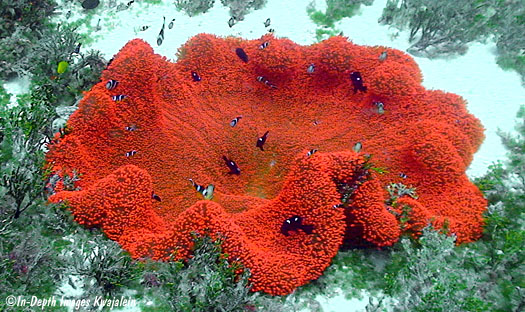
Stichodactyla haddoni is found in lagoon sandy areas, often in or near patches of Halimeda algae. Color ranges from yellow to brown to bright red, but specimens undergoing coral bleaching (see below) may be completely white. The anemones host sometimes thick clouds of young Amphiprion tricinctus along with small Dascyllus trimaculatus. Other young fish, including juvenile butterflyfish, tangs and cardinalfish, also hang around the anemone, presumably for protection. However, these non-anemonefish need to be careful. We have seen young tangs caught and eaten by they anemones they are hiding around. The anemones are also nearly always host to several crustaceans, including the crab Neopetrolisthes maculata and the shrimp Aclyocaris brevicarpalis and Anclyomenes sp. 1. In addition, other shrimp including Gnathophyllum americanum and Thor amboinensis are often found around the edges of these large anemones. Some of the most striking individuals of Stichodactyla haddoni are the bright red ones. The two photos immediately below are shot in natural light with a video camera at a depth of about 20m, deeper than you should be able to see red color. Proteins in these anemones absorb the bluer light that penetrates to this depth, then re-emit it at a lower wavelength, making it look red. The red radiation coming from the anemone is not bright, so taking a photo with an electronic flash unit or shining a bright flashlight on it does not show the red color, instead making the anemone look brown. This particular bright red anemone bleached out somewhat during each bleaching episode in 2009, 2013 and 2014, and the anemone kept shrinking in size. The last bleaching appears to have done it in altogether. It was last sighted on 22 June 2015, when my notes said it was "small and light pink, lost size and color." It was gone after the 2016 bleaching event.

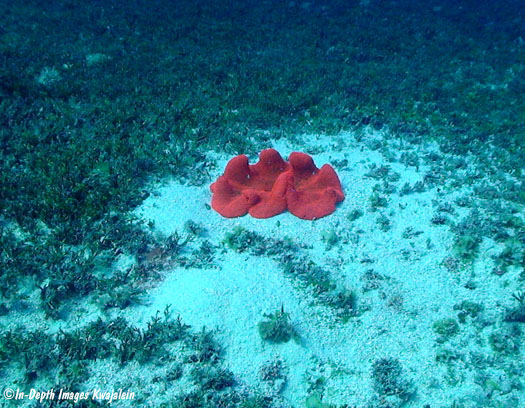
Sometimes this anemone comes in a pink variety. This one did not survive the 2014 bleaching event.
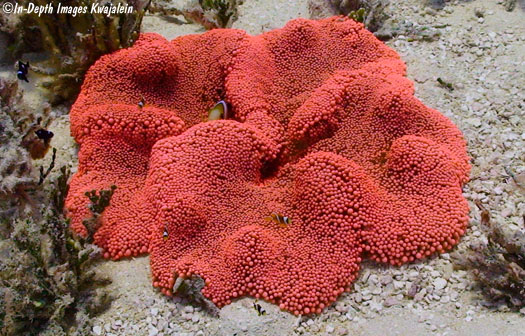
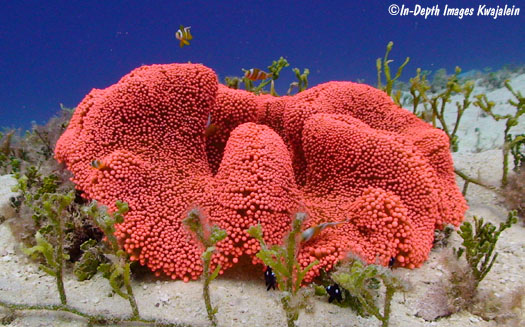
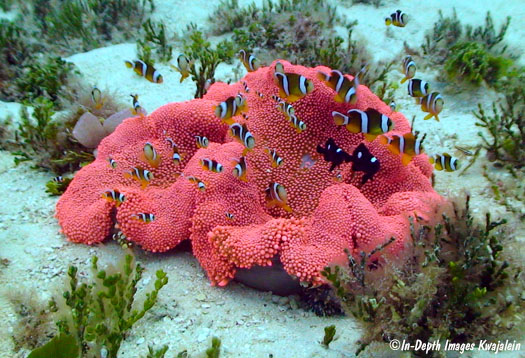
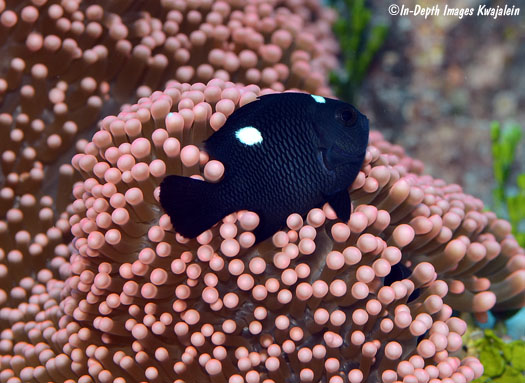
If disturbed, the anemone may retract mostly or all the way into the sand, leaving their host anemonefish and crustaceans more exposed to predation.
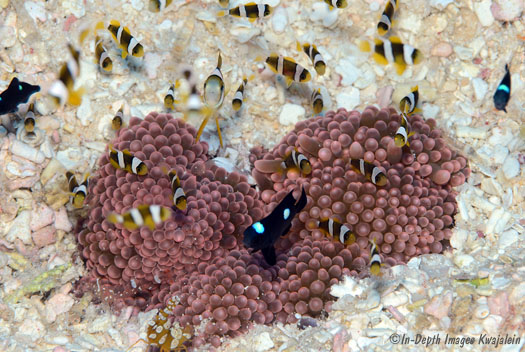
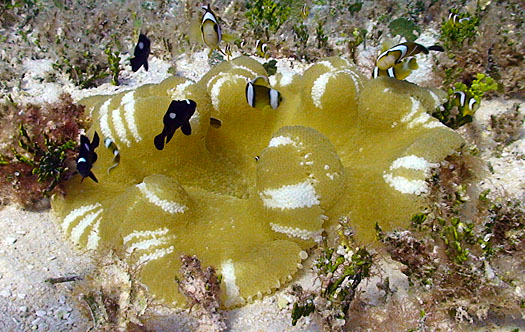
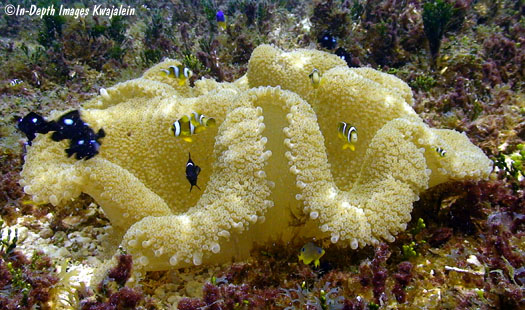
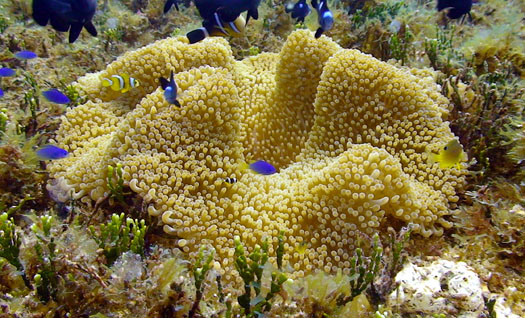
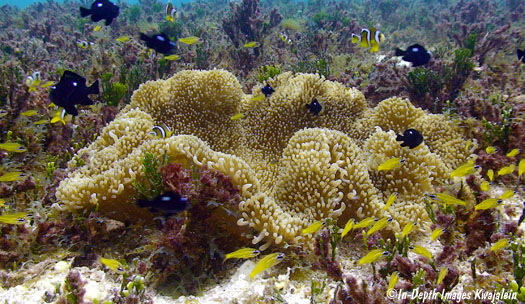
Sometimes in deeper water, the anemones flatten out to get better exposure to the more limited light coming down from above. The large individuals in the two photos below were on sand at a depth of about 35m.
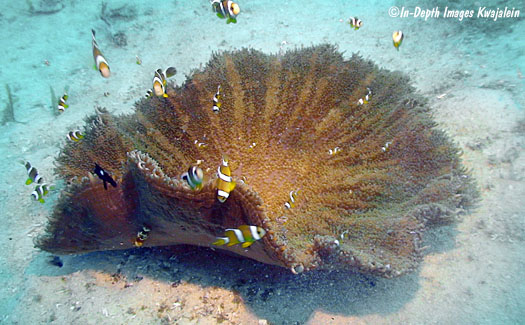
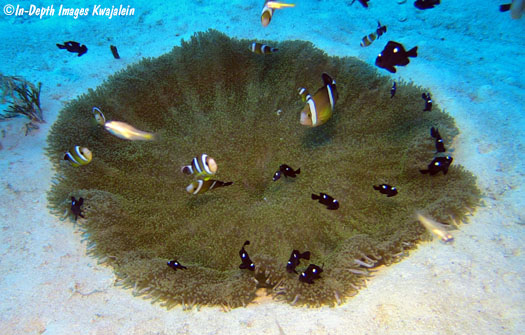
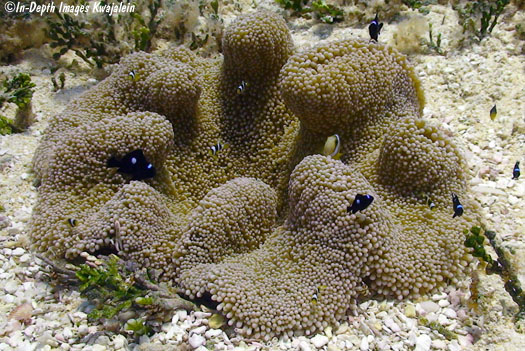
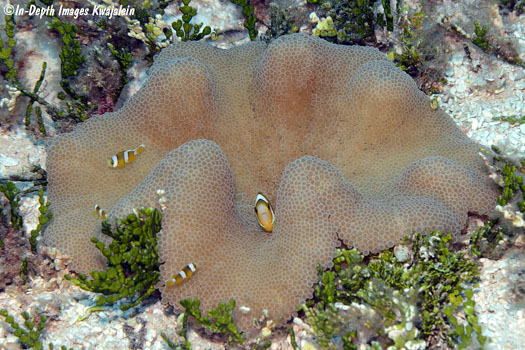
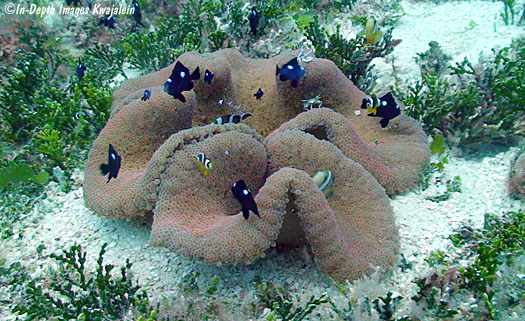
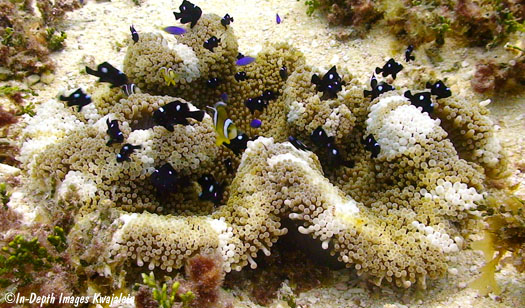
As indicated above, Stichodactyla haddoni are subject to bleaching. When the water temperature gets too warm and stays that way for a period of time, the symbiotic single-celled algae that lives within anemone and coral tissue and generally gives the host its color is expelled, leaving the still living anemone or coral white. Why the corals lose their algae is still not fully understood, but one speculation is that higher temperatures increase oxygen production in the algae to toxic levels. In any case, the algae symbionts are required for long term survival of the corals and anemones. If the warm water does not last too long, the corals and anemones can be recolonized by the algae and continue to survive. If the bleaching lasts too long, the hosts die, probably by starvation. At Kwajalein, this bleaching happens when the water reaches 30°C (86°F). In all our years diving in the Marshalls, starting in the 1960s with some in the 70s and early 80s, and again from 1988 onward, we first witnessed widespread coral bleaching in 2009, the first time we recorded the water reaching 30°C. It happened again in 2013, 2014, 2016 and at least to a limited extent in 2017. Many corals and anemones have died in these repeated events. Clearly the ocean is getting warmer, and it is having a serious effect on coral reefs. Below show some examples of bleaching or fully bleached Stichodactyla haddoni anemones.
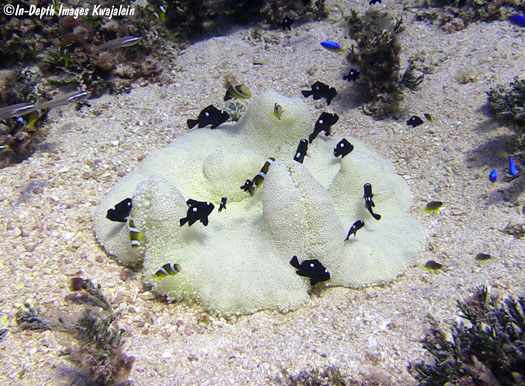
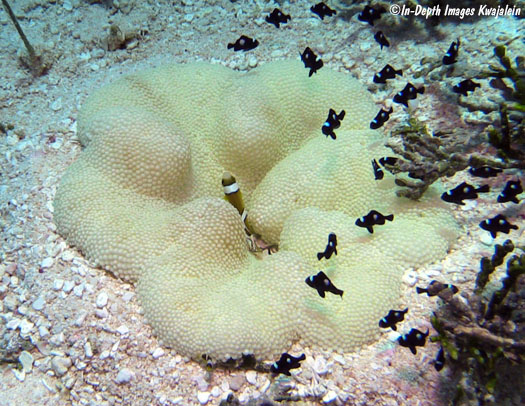
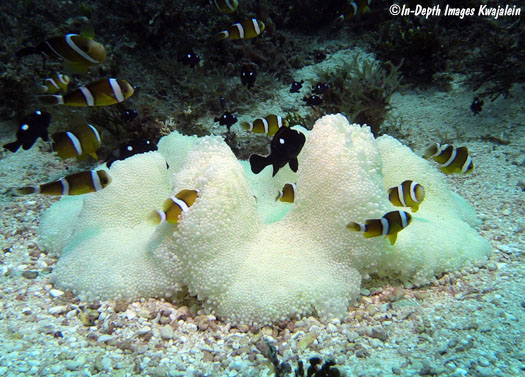
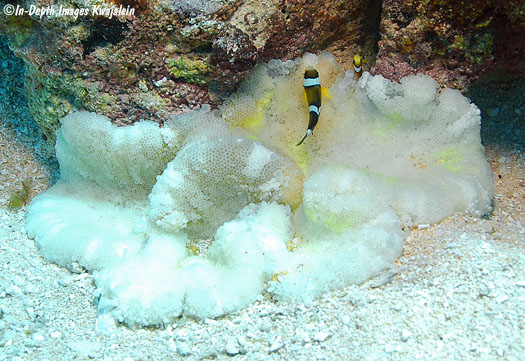
The next four shots show the same anemone unbleached and partially bleached.
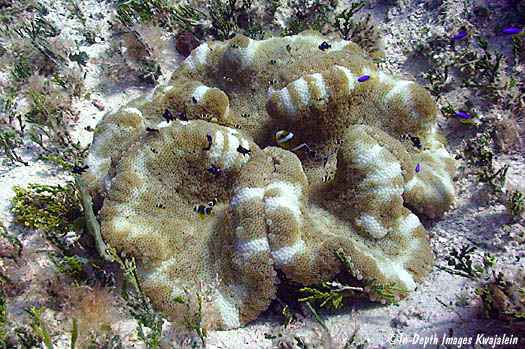
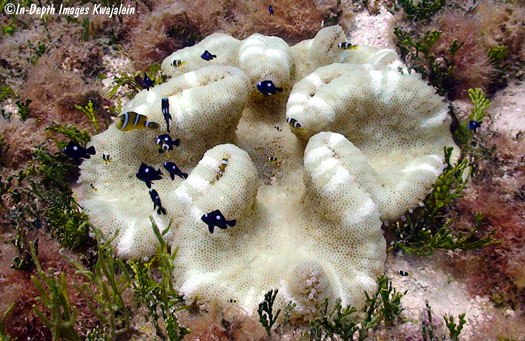
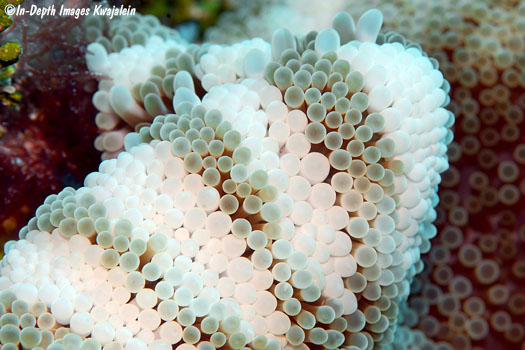
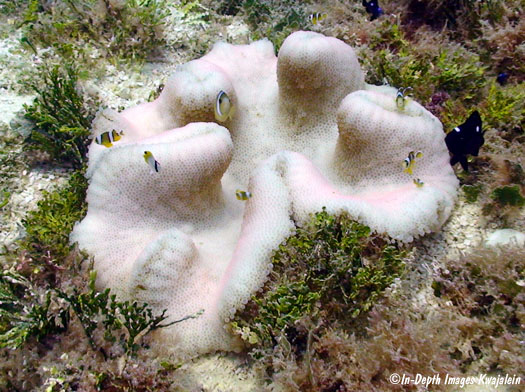
Juveniles.
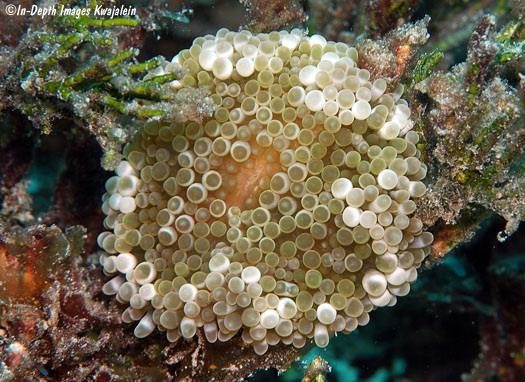
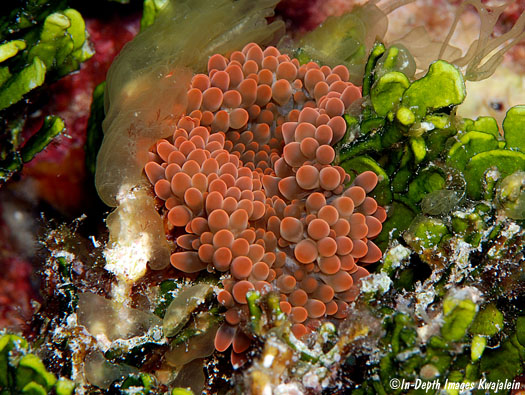
A juvenile anemone hosting a Thor amboinensis.
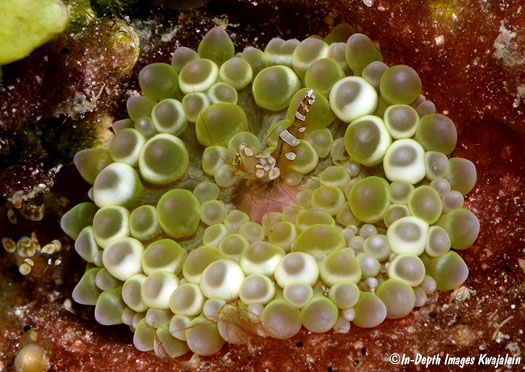
Created 28 July 2018